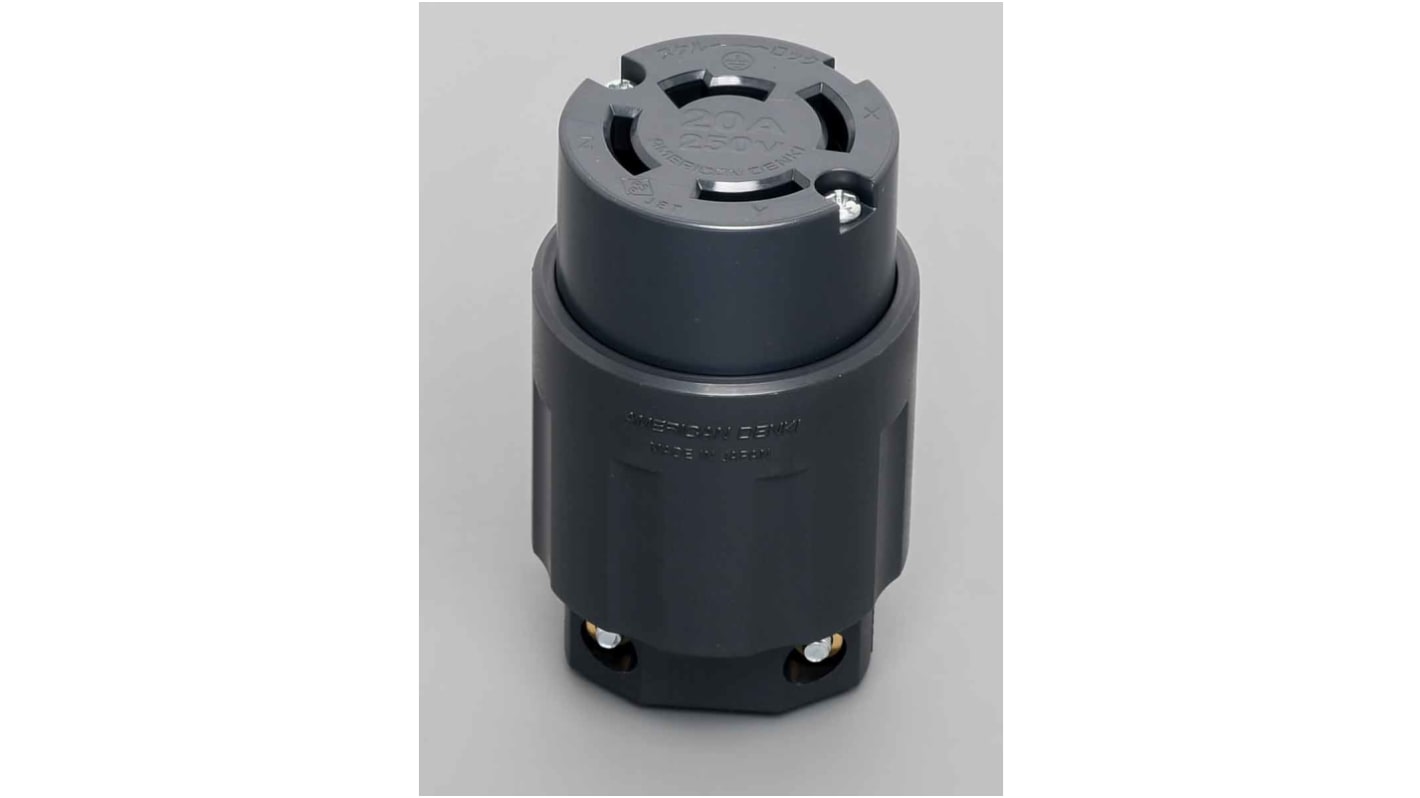Japanese Mains Connector, 20A, Cable Mount, 250 V
- RS Stock No.:
- 392-0698
- Mfr. Part No.:
- 4224N
- Brand:
- American Denki

Currently unavailable
We don’t know if this item will be back in stock, it is being discontinued by the manufacturer.
- RS Stock No.:
- 392-0698
- Mfr. Part No.:
- 4224N
- Brand:
- American Denki
Specifications
Legislation and Compliance
Product Details
Find similar products by selecting one or more attributes.
Select all | Attribute | Value |
|---|---|---|
| Brand | American Denki | |
| Plug/Socket | Socket | |
| Country | Japan | |
| Current Rating | 20A | |
| Mounting Type | Cable Mount | |
| Mains Socket Type | NEMA 5 - 15R | |
| Number of USB Sockets | 0 | |
| Voltage Rating | 250 V | |
| Pole Format | 3P+E | |
| Colour | Black | |
| Gender | Female | |
| Body Material | Nylon | |
| Termination Method | Screw | |
Select all | ||
|---|---|---|
Brand American Denki | ||
Plug/Socket Socket | ||
Country Japan | ||
Current Rating 20A | ||
Mounting Type Cable Mount | ||
Mains Socket Type NEMA 5 - 15R | ||
Number of USB Sockets 0 | ||
Voltage Rating 250 V | ||
Pole Format 3P+E | ||
Colour Black | ||
Gender Female | ||
Body Material Nylon | ||
Termination Method Screw | ||
- COO (Country of Origin):
- JP
N-Type Socket (Nylon)
Connector Body is the portable relay receptacle which is provided with means for attachment to a flexible cord and which is not intended for permanent mounting, and is used to connect to an inlet for receiving power and to supply power.
The material of the main body and the housing are made of flame-retardant (UL94 V-0) nylon resin which possesses heat resistance and tracking resistance and contains no harmful substances.
Connectivity is "crimp terminal" tightening the terminal screw on the side and "screwing terminal" using wire insertion holes.
The material of the main body and the housing are made of flame-retardant (UL94 V-0) nylon resin which possesses heat resistance and tracking resistance and contains no harmful substances.
Connectivity is "crimp terminal" tightening the terminal screw on the side and "screwing terminal" using wire insertion holes.
Note
Pole placement diagram shown from the front.
